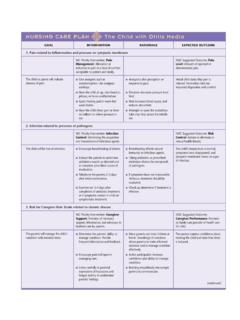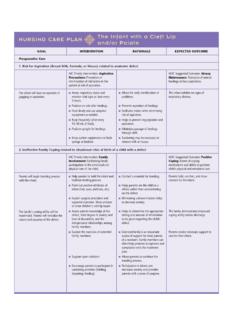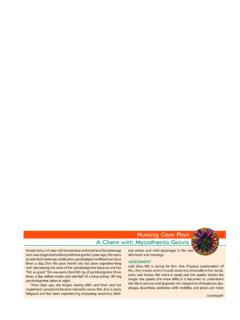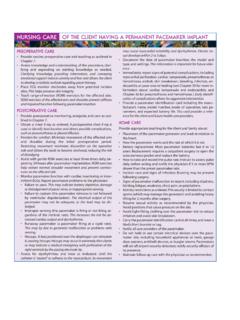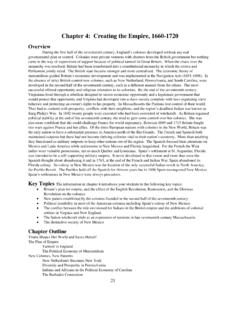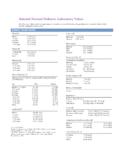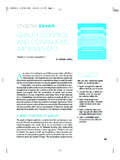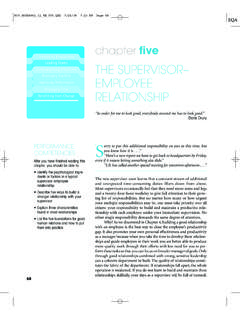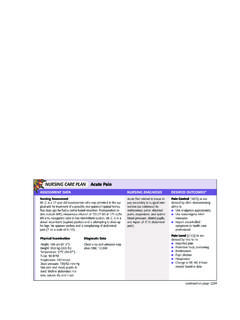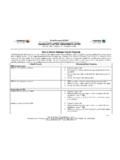Transcription of Mixing Insulins: 10 Units of Regular and 20 Units of …
1 490 unit IV / Responses to Altered Endocrine Function Lipodystrophy. Lipodystrophy (hypertrophy of subcuta- Lente insulin preparations may be mixed with each other;. neous tissue) or lipoatrophy (atrophy of subcutaneous tissue) Mixing with Regular insulin or with PZI and NPH insulin is may result if the same injection sites are used repeatedly, espe- not recommended. cially with pork and beef insulins. The tissues become hard- Do not mix human and animal insulins. ened and have an orange-peel appearance. The use of refriger- Always withdraw Regular insulin first to avoid contaminating ated insulin may trigger the development of tissue atrophy or the Regular insulin with intermediate-acting insulin . hypertrophy. These problems rarely occur with the use of hu- man insulins. Lipodystrophy and lipoatrophy alter insulin ab- insulin Regimens. The appropriate insulin dosage is indi- sorption, delaying its onset or retaining the insulin in the tissue vidualized by achieving a balance among insulin , diet, and ex- for a period of time instead of allowing it to be absorbed into ercise.
2 For most people with diabetes, the timing of insulin ac- the body. Lipodystrophy usually resolves if the area is unused tion requires two or more injections each day, often a mixture for a minimum of 6 months. of rapid-acting and intermediate-acting insulins. Timing of the injections depends on blood glucose levels, food consumption, Mixing Insulins. When a person with diabetes requires more exercise, and types of insulin used. The objective is to avoid than one type of insulin , Mixing is recommended to avoid ad- daytime hypoglycemia while achieving adequate blood glu- ministering two injections per dose. Two different concentra- cose control overnight. Typical insulin regimens are discussed tions are administered, because a single dose of intermediate- in Table 18 5. acting or long-acting insulin rarely provides adequate control of Hypersensitivity Responses. When injected, insulin may blood glucose levels.
3 The procedure for Mixing insulins is de- cause local and systemic hypersensitivity responses. Manifes- scribed in Box 18 9. Following are some general guidelines. tations of local reactions are a hardening and reddening of the Commercially mixed insulins are recommended if the in- area that develops over several hours. Local reactions result sulin ratio is appropriate for the requirements of the client. from a contaminant in the insulin and are more likely to occur Regular insulin may be mixed with all other types of insulin ; when less purified insulin products are used. it may be injected immediately after Mixing or stored for fu- Systemic reactions occur rapidly and are characterized by ture use. widespread red, intensely pruritic welts. Respiratory difficulty NPH insulin and PZI insulin may be mixed only with regu- may occur if the respiratory system is involved.
4 Systemic re- lar insulin . sponses are due to an allergy to the insulin itself and are most Mixing Insulins: 10 units of regular and 20 Units of NPH. 1. Wash hands. 2. Inspect Regular insulin for clarity. 3. Gently rotate NPH insulin to mix well. 20 Units 10 Units 4. Wipe off the top of both vials with an alcohol pad. 5. Draw 20 U of air into the syringe, and inject air into the NPH vial (Figure A). Withdraw needle. 20 U air 10 U air 6. Draw 10 U of air into the syringe, NPH Regular (Cloudy) (Clear). insulin insulin and inject air into the Regular vial (Figure B). A Injecting air into the NPH vial. B Injecting air into the Regular insulin vial. 7. Invert the vial,and withdraw 10 U. of Regular insulin (Figure C). Withdraw the needle. 8. Insert the needle into the NPH Air Air vial, and carefully withdraw 20 U NPH. of NPH insulin (Figure D). Regular (Cloudy). (Clear) insulin insulin 9.
5 Administer the insulin . 10. Wash hands, and properly dis- pose of the syringe. 10 Units Regular insulin 20 Units NPH insulin 10 Units Regular insulin 30 Units total dosage C Withdrawing Regular insulin . D Withdrawing NPH insulin .

